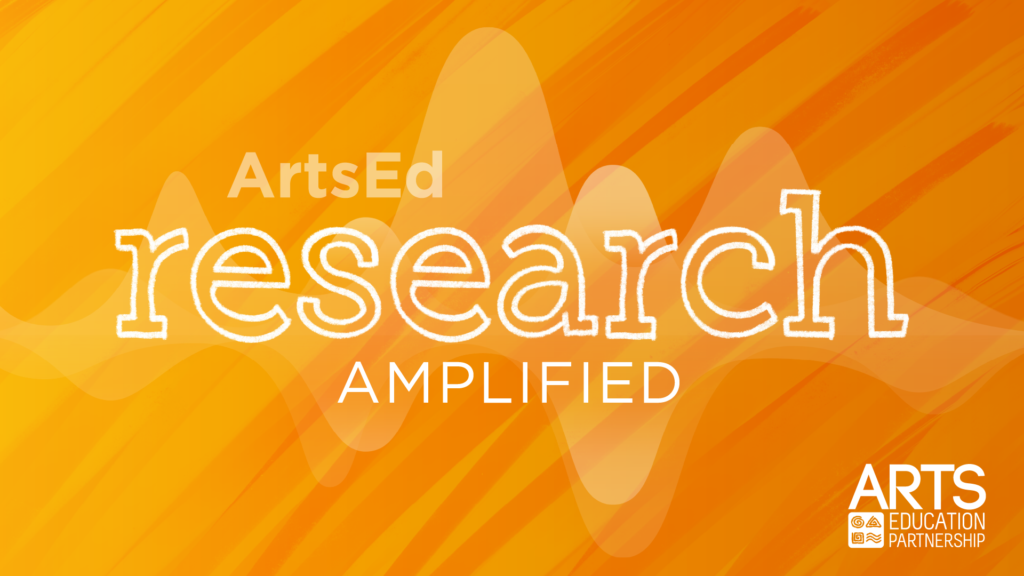ArtsEdSearch: 300 Studies and Counting

In 2012, the Arts Education Partnership curated an extensive collection of research on arts education in one place: ArtsEdSearch. Eight years later, this online clearinghouse of research continues to support practitioners, researchers, policymakers and other stakeholders in their work through topical and trusted research.
In 2020, AEP added even more research to ArtsEdSearch — exceeding a 300 published studies milestone during AEP’s 25th anniversary. Seven new study summaries, added this month, explore a variety of topics, including how a museum-based program for students from low-income households impacts academic outcomes, how a multi-genre arts program supports social and emotional learning for students with autism, and how a performative aerial practice program supported participants’ mental health.
ArtsEdSearch includes summaries of research studies that span age levels, arts disciplines, program providers and other searchable criteria and show how these programs can have schoolwide impacts. Studies included in ArtsEdSearch address relevant and broadly applicable education topics, such as social and emotional learning, school engagement, educator workforce, and civic and community engagement.
In fact, the research found in ArtsEdSearch, can also help answer questions about how arts education can support lasting outcomes for students, educators and schools that extend beyond the classroom.
-
- How can high schools reduce dropout rates?
Research shows that some students who are considered to be at higher risk for dropping out of high school because of limited access to opportunities for academic, personal and social success remained in school because they enjoyed engaging in the arts and expressed interest in working in an arts field.
- How can high schools reduce dropout rates?
-
- What are effective strategies for educator professional development?
Research shows that educators who delivered a music education program experienced increased confidence when teaching unfamiliar subjects and in how they approached their teaching.
- What are effective strategies for educator professional development?
-
- How can school leaders promote culturally responsive teaching and learning?
Research shows that school leaders who participated in guided visits of an art museum developed new perspectives on their respective roles and sought to improve their practices and skills.
- How can school leaders promote culturally responsive teaching and learning?
As states consider policies to support long-term success for their students, research helps school and state leaders understand how to support development from the early years into adulthood. As states adopt policies for education standards, instructional and graduation requirements, and teacher licensure, policymakers can use the research in ArtsEdSearch to explore and implement programs that help students develop their knowledge and skills in the arts and build robust skill sets they can apply across other subjects.
It can be hard for many of us to imagine a world without research. We learn from research. We shift our environments because of research. We conduct more research from what we learn through research. As the arts education field continues to evolve, so will ArtsEdSearch — and AEP can’t wait to see what research shows us next.
This post comes from the Arts Education Partnership, a national coalition of over 100 education, arts, business, culture, government and philanthropy organizations at Education Commission of the States.



